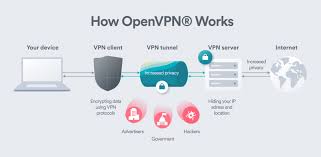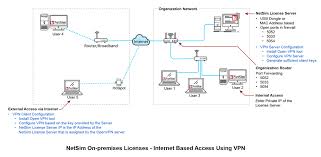Fedora Linux: Power, Freedom, and Innovation
In the vast landscape of open-source operating systems, Fedora Linux stands out as a powerful and cutting-edge distribution that empowers users with freedom and innovation. Developed by the Fedora Project, a community-driven initiative backed by Red Hat, Fedora Linux has gained a reputation for its commitment to delivering the latest technologies while maintaining stability and security.
At its core, Fedora Linux embraces the philosophy of open-source software, which promotes transparency, collaboration, and accessibility. This ethos is reflected in every aspect of the operating system, from its development process to its extensive software repository. With Fedora Linux, users have access to a vast ecosystem of free and open-source software that can be easily installed and updated.
One of the key strengths of Fedora Linux is its focus on innovation. As an upstream contributor to many open-source projects, Fedora acts as a testing ground for new features and technologies before they make their way into other distributions. This means that users of Fedora are often at the forefront of technological advancements in areas such as containerization, virtualization, cloud computing, and more.
Fedora’s commitment to innovation is evident in its use of the DNF package manager (Dandified Yum), which provides efficient package management capabilities. With DNF, users can effortlessly install, update, or remove software packages with just a few simple commands. This streamlined process ensures that users always have access to the latest versions of their favorite applications.
Another notable feature of Fedora Linux is its emphasis on security. The operating system includes robust security measures such as SELinux (Security-Enhanced Linux) and Firewalld to protect against unauthorized access and potential threats. Regular security updates are provided promptly to ensure that users can work confidently without compromising their privacy or data integrity.
Fedora’s vibrant community is another aspect that sets it apart. Comprising developers, enthusiasts, designers, translators, documentation writers – people from all walks of life – the Fedora community is a diverse and inclusive space where ideas are shared, problems are solved, and collaborations flourish. The community’s dedication to supporting users and fostering an environment of learning is evident in the numerous forums, mailing lists, and chat channels available for users to seek assistance or engage in discussions.
Whether you are a software developer, system administrator, or simply an individual looking for a reliable and feature-rich operating system, Fedora Linux offers a compelling choice. Its commitment to open-source principles, focus on innovation, robust security measures, and vibrant community make it a powerful platform that empowers users to explore new possibilities.
Experience the power of Fedora Linux today and join a global community that values freedom, collaboration, and pushing the boundaries of technology. Discover how Fedora can transform your computing experience by embracing the power of open-source software.
8 Essential Tips for Fedora Linux Users
- Make sure to keep your Fedora system up-to-date. Regular updates are essential for ensuring security and stability.
- Use the dnf package manager (or yum) to install, update, or remove packages from your system.
- Take advantage of the Fedora Project’s excellent documentation to help you get started with using Fedora Linux.
- Learn how to use SELinux (Security Enhanced Linux) for enhanced security on your system.
- Utilize the powerful command line interface in order to quickly execute tasks and access information about your system more easily than with a graphical user interface (GUI).
- Install additional software from third-party repositories if necessary, but remember that this could potentially compromise security and stability of your system if done incorrectly or without caution.
- Use virtual machines as an alternative method of running applications which may not be compatible with the version of Fedora you are running on your system natively, such as Windows applications or games that require specific versions of DirectX or OpenGL libraries which may not be available in Fedora by default due to licensing restrictions from Microsoft/Adobe/etc..
- Familiarize yourself with common troubleshooting techniques for when things don’t go according to plan – Google is always a great place to start!
Make sure to keep your Fedora system up-to-date. Regular updates are essential for ensuring security and stability.
The Importance of Keeping Your Fedora System Up-to-Date
When it comes to using Fedora Linux, one fundamental tip that cannot be stressed enough is the importance of keeping your system up-to-date. Regular updates are crucial for maintaining the security and stability of your Fedora installation.
In today’s digital landscape, where cyber threats are becoming increasingly sophisticated, staying on top of software updates is paramount. Developers and security experts work tirelessly to identify vulnerabilities and release patches to address them. By regularly updating your Fedora system, you ensure that these security patches are applied promptly, reducing the risk of potential exploits or unauthorized access.
Moreover, updates also play a vital role in enhancing the stability and performance of your Fedora system. Developers continuously refine and optimize software components to improve functionality and address any known issues. By keeping your system up-to-date, you benefit from these improvements, ensuring a smooth and reliable computing experience.
Updating your Fedora system is a straightforward process. The DNF package manager (Dandified Yum) makes it easy to manage software updates efficiently. Simply open a terminal window and run the appropriate command to check for available updates and install them with a few simple keystrokes.
By incorporating regular updates into your routine, you actively contribute to the overall security and stability of the Fedora community. Additionally, staying up-to-date ensures that you can take full advantage of new features and advancements introduced by developers.
Remember that updating your Fedora system goes beyond just applying software patches; it also extends to updating third-party applications installed on your system. Many applications provide their own update mechanisms or rely on repositories maintained by their developers. Keeping these applications updated is equally important for maintaining security across all aspects of your system.
In conclusion, making sure to keep your Fedora system up-to-date is essential for maintaining optimal security and stability. By regularly applying software updates provided by the Fedora Project, you safeguard yourself against potential vulnerabilities while benefiting from improved functionality and performance. Embrace the habit of updating your system, and enjoy a secure and reliable Fedora Linux experience.
Use the dnf package manager (or yum) to install, update, or remove packages from your system.
Unlock the Power of DNF Package Manager in Fedora Linux
If you’re a Fedora Linux user, you have a powerful tool at your disposal: the DNF package manager (or yum). This command-line utility is designed to simplify the installation, updating, and removal of software packages on your system. Whether you’re a seasoned Linux user or just starting out, mastering DNF can significantly enhance your Fedora experience.
Installing new software packages is a breeze with DNF. Simply open up your terminal and use the appropriate command to install the desired package. For example, to install the popular text editor “nano,” you can type:
“`
sudo dnf install nano
“`
DNF will take care of fetching the necessary files from Fedora’s extensive software repository and handle any dependencies required by the package. Within moments, you’ll have nano ready to use on your system.
Updating software packages is equally straightforward. With a single command, DNF will check for updates to all installed packages and fetch any available updates. To perform an update, run:
“`
sudo dnf update
“`
DNF will compare the versions of installed packages with those available in the repository and download and install any newer versions it finds. Regularly updating your system ensures that you benefit from bug fixes, security patches, and new features provided by developers.
Removing unwanted packages is also effortless with DNF. If you no longer need a particular software package or want to free up disk space, you can use DNF to remove it from your system. The following command will remove the specified package while also removing any dependencies that are no longer required:
“`
sudo dnf remove
“`
Replace `` with the name of the package you wish to remove.
It’s worth noting that while DNF is now the default package manager in recent versions of Fedora Linux, some older documentation or tutorials may still reference “yum.” Rest assured, yum is essentially the same as DNF and can be used interchangeably in most cases.
By harnessing the power of DNF (or yum), you can efficiently manage your software packages in Fedora Linux. Whether you’re installing new software, updating existing packages, or removing unnecessary ones, DNF simplifies the process, saving you time and effort. Embrace this handy tool and take full control of your Fedora system.
Take advantage of the Fedora Project’s excellent documentation to help you get started with using Fedora Linux.
Take Your Fedora Linux Experience to the Next Level with the Fedora Project’s Documentation
When it comes to exploring and mastering a new operating system like Fedora Linux, having access to comprehensive and reliable documentation is crucial. Fortunately, the Fedora Project provides an exceptional resource that can help you get started and make the most of your Fedora Linux experience.
The Fedora Project’s documentation serves as a valuable guide for both beginners and experienced users alike. Whether you are transitioning from another operating system or venturing into the world of Linux for the first time, this documentation is designed to simplify your journey.
Getting started with Fedora Linux can sometimes feel overwhelming, especially if you’re new to the open-source ecosystem. However, with the help of the Fedora Project’s documentation, you’ll find yourself equipped with all the necessary information to navigate through various aspects of the operating system.
The documentation covers a wide range of topics, including installation guides, software management tips, system configuration instructions, troubleshooting techniques, and much more. Each guide is meticulously crafted by experienced contributors who understand that clarity and accuracy are paramount when it comes to helping users.
Whether you prefer reading detailed step-by-step instructions or watching video tutorials, the Fedora Project’s documentation caters to different learning styles. The guides are well-organized and easily accessible on their website. You can conveniently search for specific topics or browse through different categories to find exactly what you need.
One notable advantage of using this official documentation is that it aligns perfectly with your version of Fedora Linux. As updates are released for the operating system, corresponding updates are made to the documentation as well. This ensures that you always have access to up-to-date information tailored specifically for your version of Fedora Linux.
Additionally, if you ever encounter any difficulties or have questions while using Fedora Linux, the project’s documentation acts as a reliable troubleshooting companion. It provides solutions for common issues and offers guidance on how to overcome challenges that may arise during your journey with Fedora Linux.
By taking advantage of the Fedora Project’s excellent documentation, you can accelerate your learning process, gain confidence in using Fedora Linux, and unlock its full potential. Whether you want to explore advanced features or simply ensure a smooth transition into the operating system, this resource will be invaluable on your Linux journey.
So, don’t hesitate to dive into the wealth of knowledge offered by the Fedora Project’s documentation. Let it be your trusted companion as you embark on an exciting adventure with Fedora Linux. Discover new possibilities, expand your skills, and enjoy the freedom and flexibility that Fedora Linux has to offer.
Learn how to use SELinux (Security Enhanced Linux) for enhanced security on your system.
Enhance Security with SELinux on Fedora Linux
In the ever-evolving landscape of cybersecurity, protecting our systems from potential threats is of utmost importance. Fedora Linux, a robust and feature-rich operating system, offers a powerful tool called SELinux (Security Enhanced Linux) to bolster the security of your system. By learning how to use SELinux effectively, you can add an extra layer of protection and gain peace of mind.
SELinux is a security framework integrated into Fedora Linux that provides fine-grained access control policies. Unlike traditional discretionary access controls (DAC), which rely on user permissions, SELinux follows the principle of mandatory access controls (MAC). This means that even if a user has certain permissions, SELinux can further restrict their actions based on defined policies.
To harness the power of SELinux on Fedora Linux, it’s essential to understand its core concepts and functionalities. The first step is to become familiar with the different modes in which SELinux operates: enforcing, permissive, and disabled.
Enforcing mode is the default mode for SELinux. In this mode, strict security policies are enforced, and any violation triggers an immediate response. Permissive mode allows violations to occur but logs them without taking any action. This mode is useful for troubleshooting or when initially configuring SELinux policies. Disabled mode completely disables SELinux enforcement.
Once you have grasped the different modes, it’s time to explore how to manage SELinux policies effectively. Fedora Linux provides tools such as `semanage`, `setsebool`, and `getsebool` to manage file contexts, port labeling, boolean values (which control aspects of policy behavior), and more.
Understanding file contexts is crucial when working with SELinux. Each file or directory has its own context that determines what actions are allowed or denied by SELinux policies. With tools like `chcon` or `restorecon`, you can modify or restore file contexts as needed.
Additionally, SELinux policies can be customized to suit your specific requirements. Fedora Linux offers tools like `semanage fcontext` and `semanage permissive` to modify file contexts and set policies to allow certain actions that would otherwise be denied. This level of customization allows you to strike a balance between security and functionality.
To further enhance your knowledge of SELinux, Fedora Linux provides extensive documentation and resources. The official Fedora Project website offers comprehensive guides, tutorials, and community forums where you can seek assistance or engage in discussions with experienced users.
By taking the time to learn how to use SELinux effectively on Fedora Linux, you can significantly enhance the security of your system. SELinux acts as a powerful ally in safeguarding against potential threats by enforcing strict access controls and providing an additional layer of protection.
Embrace the power of SELinux on Fedora Linux today and embark on a journey towards a more secure computing experience. With its robust security framework and extensive resources, Fedora Linux empowers users to take control of their system’s security while enjoying the benefits of an open-source operating system.
Unlocking the Potential: Harnessing the Power of the Command Line Interface in Fedora Linux
When it comes to navigating and controlling your Fedora Linux system, there’s an often-overlooked gem that can revolutionize your experience: the command line interface (CLI). While graphical user interfaces (GUIs) provide a visual and intuitive way to interact with your system, the CLI offers unparalleled power and efficiency for executing tasks and accessing information.
The command line interface allows you to communicate with your Fedora Linux system directly through text-based commands. Although it may seem daunting at first, mastering the CLI opens up a world of possibilities and empowers you to accomplish tasks more quickly and efficiently than with a GUI.
One of the primary advantages of using the command line is its speed. With just a few keystrokes, you can execute complex commands, perform system operations, and access information about your system without navigating through multiple windows or menus. This streamlined approach saves time, especially for repetitive or intricate tasks.
Moreover, the CLI provides extensive control over your system. You have access to a wide range of powerful tools and utilities that can perform intricate operations, automate processes, and customize your environment. From package management to file manipulation, network configuration to system administration, the command line puts immense power at your fingertips.
Additionally, the command line interface offers enhanced scripting capabilities. By combining multiple commands into scripts or creating shell scripts, you can automate routine tasks or build complex workflows with ease. This level of automation not only saves time but also ensures consistency in executing tasks across different systems.
Another advantage of using the CLI is its efficiency in remote administration. Through secure shell (SSH) connections, you can remotely manage servers or systems from anywhere in the world using just a terminal emulator. This flexibility eliminates geographical constraints and empowers sysadmins to maintain and troubleshoot systems efficiently.
To get started with harnessing the power of the command line interface in Fedora Linux, familiarize yourself with basic commands such as navigating directories, listing files, copying, moving, and deleting files. Explore the vast array of command line tools available in Fedora’s extensive software repository, each serving a specific purpose and offering unique functionality.
Remember to consult the built-in documentation and online resources to deepen your knowledge and expand your command line skills. There are numerous tutorials, guides, and forums where you can seek assistance or share your experiences with fellow Fedora Linux users.
In conclusion, don’t underestimate the potential of the command line interface in Fedora Linux. Embracing the CLI allows you to execute tasks quickly, access system information effortlessly, automate processes efficiently, and gain an unparalleled level of control over your system. Unlock its power today and experience a new level of productivity and efficiency in your Fedora Linux journey.
Install additional software from third-party repositories if necessary, but remember that this could potentially compromise security and stability of your system if done incorrectly or without caution.
Installing Additional Software from Third-Party Repositories: Balancing Convenience and Security in Fedora Linux
Fedora Linux, renowned for its stability, security, and commitment to open-source principles, offers users a wide range of software through its official repositories. However, there may be instances when you require specific applications or packages that are not available in these repositories. In such cases, installing additional software from third-party repositories can be a solution. Nevertheless, it is crucial to exercise caution and understand the potential risks associated with this approach.
Third-party repositories provide access to a vast array of software that extends the capabilities of your Fedora system. They can offer proprietary applications, bleeding-edge software versions, or niche packages tailored to specific needs. By enabling these repositories and installing software from them, you gain access to a broader selection of tools and features.
However, it’s important to note that using third-party repositories comes with some inherent risks. These repositories are maintained by external individuals or organizations and may not undergo the same level of scrutiny as the official Fedora repositories. This means that the quality control processes for these packages might vary.
The primary concern when installing software from third-party repositories is the potential compromise of system security and stability. Packages from unofficial sources may contain malicious code or vulnerabilities that could expose your system to threats. Additionally, compatibility issues between third-party packages and Fedora’s core components could lead to system instability or conflicts.
To mitigate these risks, it is essential to exercise caution when adding third-party repositories and installing software from them. Here are some best practices:
- Research: Before adding a new repository or installing software from it, research its reputation and reliability within the Fedora community. Look for user reviews or feedback regarding the repository’s credibility and track record.
- Trustworthy Sources: Stick to well-known and reputable third-party repositories that have a strong track record of maintaining high-quality packages with regular updates.
- Verification: Verify the authenticity and integrity of the packages you intend to install. Check for cryptographic signatures or checksums provided by the repository to ensure that the packages have not been tampered with.
- Selectivity: Be selective in choosing which packages to install from third-party repositories. Only install software that you genuinely need and cannot find in the official Fedora repositories.
- Regular Updates: Keep track of updates from both official and third-party repositories. Regularly update your system to ensure that you receive security patches and bug fixes promptly.
Remember, installing additional software from third-party repositories should be approached with caution. If done incorrectly or without due diligence, it can potentially compromise the security and stability of your Fedora Linux system. By following these best practices, you can strike a balance between convenience and maintaining a secure environment for your computing needs in Fedora Linux.
Use virtual machines as an alternative method of running applications which may not be compatible with the version of Fedora you are running on your system natively, such as Windows applications or games that require specific versions of DirectX or OpenGL libraries which may not be available in Fedora by default due to licensing restrictions from Microsoft/Adobe/etc..
Unlocking Compatibility: Using Virtual Machines in Fedora Linux
Fedora Linux, renowned for its versatility and open-source nature, provides users with a multitude of applications and tools. However, there may be instances where you encounter software that is not directly compatible with the version of Fedora you are running natively. This could include Windows applications or games that rely on specific versions of DirectX or OpenGL libraries, which may not be readily available in Fedora due to licensing restrictions from companies like Microsoft or Adobe.
Fortunately, Fedora Linux offers a solution to this compatibility challenge: virtual machines. By harnessing the power of virtualization technology, you can create a virtual environment within your Fedora system that emulates another operating system, such as Windows. This allows you to run applications or games that require specific dependencies not present in your native Fedora installation.
Virtual machines provide a secure and isolated space where you can install and run an entirely different operating system alongside your primary Fedora setup. With software like VirtualBox or KVM (Kernel-based Virtual Machine), setting up a virtual machine becomes a straightforward process.
Once your virtual machine is up and running, you can install the desired operating system within it. In this case, if you need to run Windows applications or games on your Fedora system, installing a licensed copy of Windows within the virtual machine would be necessary.
With the virtual machine configured and the desired operating system installed, you can now install any software or game that requires specific DirectX or OpenGL libraries without worrying about compatibility issues. The virtual machine environment effectively bridges any gaps between your native Fedora installation and the requirements of the software you wish to use.
It’s important to note that running a virtual machine does require sufficient hardware resources, including CPU power, RAM allocation, and disk space. Depending on the resource-intensive nature of the application or game being run within the virtual machine, it may require more substantial hardware specifications.
By leveraging virtual machines as an alternative method for running incompatible applications, Fedora Linux users can overcome compatibility barriers and enjoy a wider range of software options. This approach provides flexibility without compromising the stability and security of the primary Fedora system.
So, if you find yourself needing to run Windows applications or games that demand specific DirectX or OpenGL libraries not readily available in your Fedora installation, consider exploring the world of virtual machines. Unlock compatibility, expand your software choices, and embrace the power of open-source innovation with Fedora Linux.
Familiarize yourself with common troubleshooting techniques for when things don’t go according to plan – Google is always a great place to start!
Familiarize Yourself with Troubleshooting Techniques on Fedora Linux
In the world of technology, it’s not uncommon for things to occasionally go awry. Even on the reliable and robust Fedora Linux operating system, there may be times when you encounter unexpected issues or errors. When faced with such situations, it’s essential to have a few troubleshooting techniques up your sleeve to quickly resolve problems and get back on track.
One valuable tip for Fedora Linux users is to familiarize themselves with common troubleshooting techniques. By having a basic understanding of how to diagnose and fix common issues, you can save time and frustration in resolving problems that may arise.
Google, the ubiquitous search engine, can be an invaluable resource when it comes to troubleshooting on Fedora Linux. It serves as an excellent starting point for finding solutions to various technical challenges. By simply entering relevant keywords related to the problem you’re facing, you’ll likely find numerous online resources, forums, and discussions where others have encountered similar issues.
When using Google for troubleshooting purposes on Fedora Linux, consider including specific keywords related to your problem along with “Fedora” or “Linux” in your search query. This approach helps narrow down the results and directs you towards solutions that are more likely tailored to your specific distribution.
While Google is a great starting point, remember that the Fedora community itself is an excellent resource too. The official Fedora website offers extensive documentation, forums, mailing lists, and chat channels where users can seek assistance from experienced community members. These platforms often provide detailed guides and step-by-step instructions for troubleshooting various aspects of the operating system.
Additionally, exploring online communities dedicated specifically to Fedora Linux can be immensely helpful. These communities are filled with passionate users who are eager to share their knowledge and assist others in overcoming challenges they may encounter while using Fedora Linux.
When troubleshooting on Fedora Linux (or any other operating system), it’s essential to approach the process systematically. Start by identifying the symptoms and gathering relevant information about the issue. This may include error messages, log files, or any recent changes made to the system. With this information in hand, you can then search for potential solutions and follow troubleshooting steps provided by reliable sources.
Remember that troubleshooting is a skill that improves with practice. As you encounter and resolve different issues on Fedora Linux, you’ll become more proficient in diagnosing problems and finding solutions efficiently.
So, the next time something doesn’t go according to plan on your Fedora Linux system, don’t panic! Take a deep breath, head to Google or the Fedora community resources, and apply your newfound troubleshooting knowledge. With a little patience and persistence, you’ll be back on track in no time.












